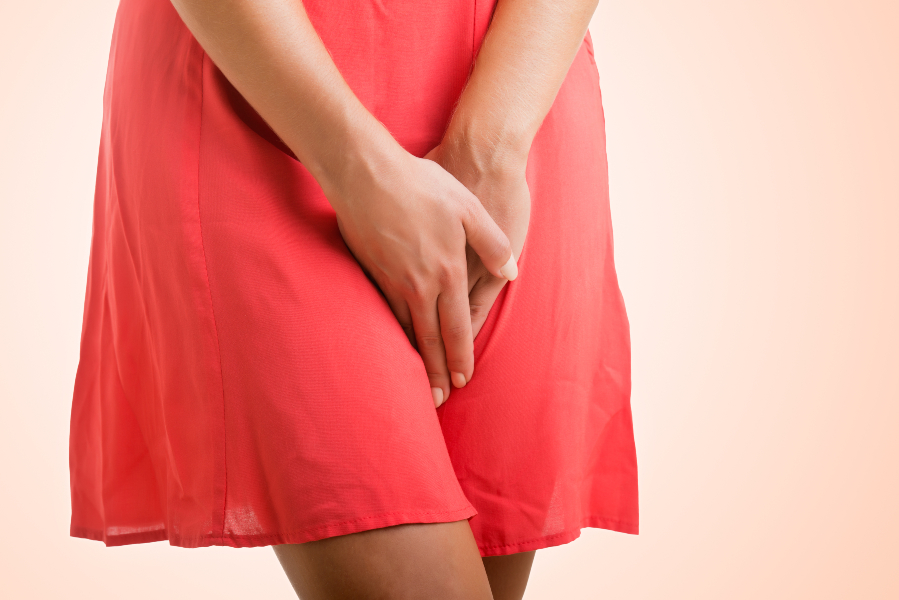
It’s never easy to talk about problems you’re having “down there,” especially when you’re an adult who can’t control your bladder. But you should know that there’s help for urinary incontinence.
Dr. Chinyere Orafu at Ohio Lasers & Wellness Centers knows how frustrating urinary incontinence can be. She offers her patients a way back to healthy urinary functioning with VTone.
What causes urinary incontinence?
In understanding the causes of urinary incontinence, it’s noteworthy to learn how your urinary system works.
It begins in your kidneys, which make urine and then send it to your bladder for storage. Your bladder muscles then tighten when you need to urinate, forcing urine out of your bladder through a tube called the urethra. Simultaneously, the sphincter muscles around the urethra relax to let the urine flow out of your body.
This delicate balance of muscles relaxing and tightening helps you control the flow of urine — when that balance gets disrupted, you have urinary incontinence.
Urinary incontinence develops when the bladder muscles tighten and the sphincter muscles aren’t strong enough to close the urethra. The result is a sudden, strong urge to urinate that’s difficult to control.
Because your urinary muscles are compromised, any activity that puts pressure on them, such as laughing, sneezing, or exercising, can cause you to leak urine. For some, urinary incontinence means you only leak a small amount of urine, but others may release a lot of urine all at once.
Who’s at risk for urinary incontinence?
Anyone can develop urinary incontinence, but it affects twice as many women as men. This disparity is due to reproductive health events unique to women, including pregnancy, childbirth, and menopause. Each event affects the bladder, urethra, and other muscles that support these organs.
The female urethra is also shorter than the male urethra, which means fewer sphincter muscles are holding back urine. Any damage to those muscles can lead to incontinence.
We’d also like to note that urinary incontinence isn’t always an age-related condition. Though urinary incontinence typically develops later in life, many younger women struggle with urine leakage.

What are the types of urinary incontinence?
Let’s review stress and urge — the two different types of urinary incontinence.
Stress incontinence
Stress incontinence is the most common type of urinary incontinence, but it’s also the most frequent one affecting younger women. This type of incontinence occurs when pressure on weakened pelvic floor muscles causes you to leak urine.
Urge incontinence
Urge incontinence refers to urine leakage occurring after a strong, sudden urge to urinate before you can make it to the bathroom. Even if you get to the bathroom in time, urge incontinence may make you feel the urge to urinate more than eight times a day. Some refer to this type of incontinence as an overactive bladder.
How can VTone help?
No matter what’s caused urinary incontinence or which type you have, the bottom line is that it’s a frustrating and embarrassing problem — it’s also one we can help you fix.
VTone is a gentle, FDA-approved technology designed to treat urinary incontinence in women. It provides intravaginal electrical muscle stimulation (EMS) and muscle re-education to rehabilitate weak pelvic floor muscles.
During your treatment session, we carefully insert the two-sided tip into your vaginal canal. It then triggers involuntary muscle contractions, which tighten and strengthen your pelvic floor muscles. Some call the effects of VTone “super Kegels.” The result is stronger pelvic floor muscles that function and (bonus) improve your sex life.
What’s best is that VTone is noninvasive; you can get treated with no pain and no downtime.
But VTone isn’t just for urinary incontinence; it’s for other pelvic floor problems, including bladder and uterine prolapse. Prolapses occur when your organs sag or droop out of their normal position. VTone effectively strengthens your pelvic floor muscles, which keeps your bladder and uterus securely in their place and helps you avoid prolapse in the future.
VTone is also a great option if you’ve just had a baby and are looking for a faster way to restore your pelvic floor strength and avoid the common postpartum pitfalls.
What else can I do?
In addition to VTone, there are several things you can do to improve and possibly reverse urinary incontinence, such as:
- Doing Kegel exercises
- Maintaining a healthy weight
- Avoiding certain drinks that exacerbate incontinence
- Quitting smoking
You may also try training your bladder by going to the bathroom at set times every day. Treating other conditions like constipation can also take some pressure off your urinary system.
At our practice, we also recommend combining VTone with our other vaginal rejuvenation services to rehabilitate your pelvic floor.
Ready to restore your confidence and quality of life without surgery? We’d love to talk with you. Call or go online to schedule an appointment at one of our offices in Dover or Canton, Ohio.









